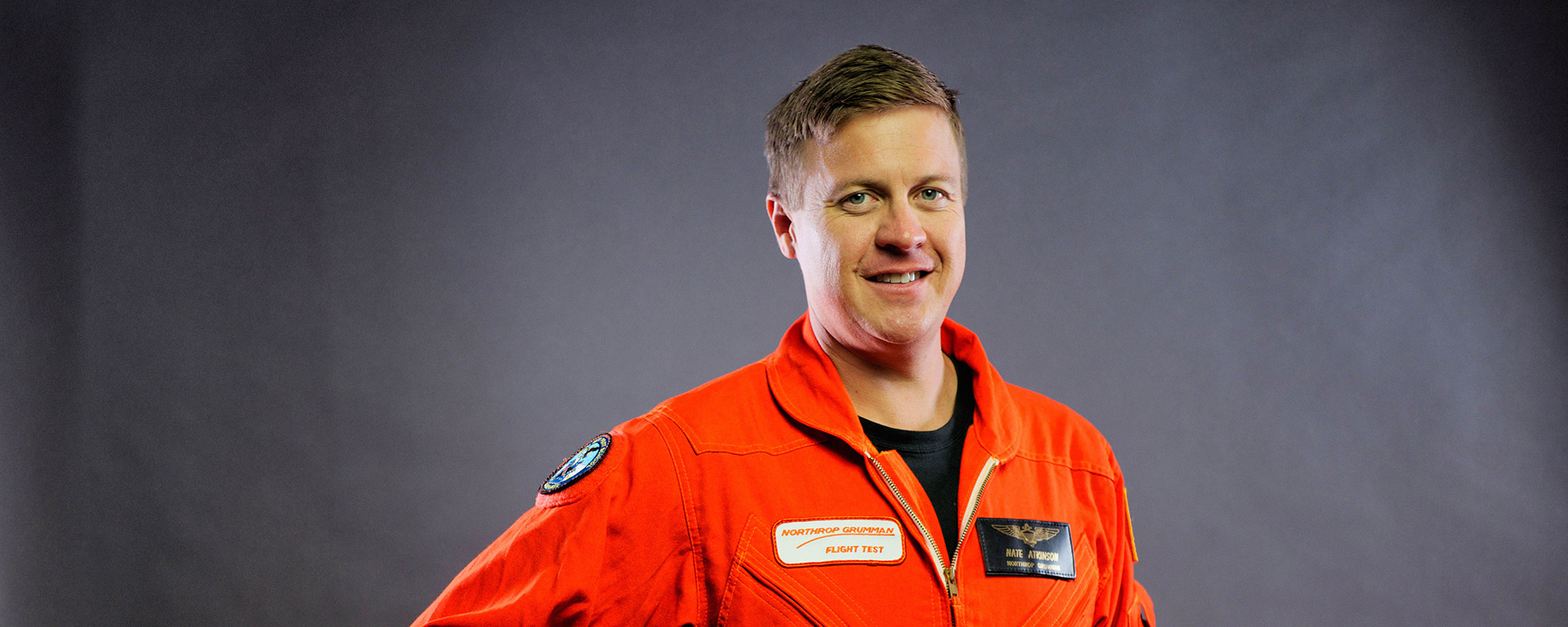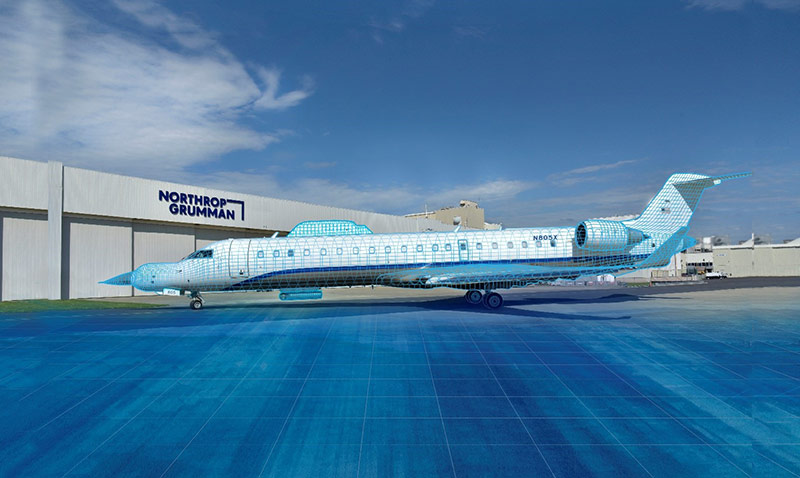From a young age, Lucas Kadar was drawn to aerospace.
Fast-Tracking Concept to Combat
The Power of Northrop Grumman’s Customizable Test Fleet
By Caitlyn OFlaherty
In the hangar on Northrop Grumman’s Baltimore, Maryland, campus sit three Bombardier CRJ-700s that look more like transformers than the regional airliners they once were. Known as “flying laboratories,” these commercial jets have been gutted and reconfigured to be testbeds for company technologies. And the testing fleet isn’t limited to the skies; Northrop Grumman owns and operates four on-water test vessels in the Chesapeake Bay as well.
“The ability to test, innovate, reconfigure and retest under one roof is game-changing. It enables our program engineers to refine hardware and software in real-world environments in substantially less time,” said Greg Ellison, director, test pilot engineering.
Fly-Fix-Fly
Thanks to the expertise of on-site structural and electrical engineers, the entire testing fleet can be custom tailored. This customization allows us to support various testing phases for up to 75 different programs while flying up to 40 programs a year. On any given day, a CRJ may be sporting the nose of a fighter jet and have a LITENING targeting pod on its underbelly or a Dragon’s Eye radar pod in the store station.
This customization allows for the simulation of real-world environments faced by warfighters, making testing as accurate as possible. The closer the test can mimic real world operation, the more data we can evaluate on functionality and performance.
Our flight test team facilitates the “fly-fix-fly” cycle, which means issues discovered during testing can be corrected quickly — sometimes even in-flight. Waiting to test programs on fifth-generation fighter jets, for example, can mean years-long backlogs. With our CRJs, which accrue over 1,000 flight test hours annually, we can test fifth-generation technology on readily available testbeds.
Along with the CRJs, our Baltimore fleet also includes a Dash 8 turboprop, a midsize Learjet 60, an L-39, which is a Czechoslovakian fighter jet used for simulating threats in mission scenarios, and a number of other specialized aircraft designed for diverse testing and development purposes. Across the United States, Northrop Grumman owns and operates approximately 30 flying testbeds.
“Having a diverse fleet of testbeds and the ability to simulate any platform ensures new technologies are ready when they need to be,” Paul said. “We know how important what we do is for our warfighters who are in harm’s way.”
Northrop Grumman has been a pioneer in developing modular testbed commercial aircraft that still meet stringent Federal Aviation Administration and Department of Defense airworthiness requirements. This practice is catching on, but we remain unmatched when it comes to customization and capability while also satisfying these critically important requirements.
Down by the Bay
In Annapolis, Maryland, the maritime test team operates 70- and 50-foot research vessels, a rigid-hull inflatable and a shallow-water work boat. Every maritime testbed is equipped to host workstations, test onboard programs, conduct towing operations for undersea programs and maintain a safe testing environment in open water.
Maritime testing is a one-stop shop for programs seeking validation in harsh, real-world conditions.
That kind of speed is necessary in a world where new threats emerge constantly. “We need to pivot as soon as new challenges are introduced, keeping our products on the cutting edge and proving their resilience for the warfighters facing these threats.”
Like our testbed aircraft, our four unique maritime vessels can also be rapidly modified to meet specific program requirements. Engineers design and implement solutions using materials and hardware available onboard, in real time. “We can make almost anything work,” Ryan said. “We're all doing our part to deliver the solutions of tomorrow today and it's incredibly satisfying to know what I do matters.”
Innovating at Speed
Across the industry, waiting for an available testbed is a major hurdle in getting technologies to market. According to customers, our testing program reduces their projected timeline for technology innovation and production by about two-thirds. A prime example of this efficiency is a radar system we developed, which attaches to the bottom of an aircraft and can detect the presence of improvised explosive devices. Through our in-house development, testing, and iteration, we managed to reduce a typically 10-year-long process to just four years. “That’s six more years of safeguarding service members in the field with cutting edge technology,” Paul said.
Learn more about life as a Northrop Grumman Test Pilot.


